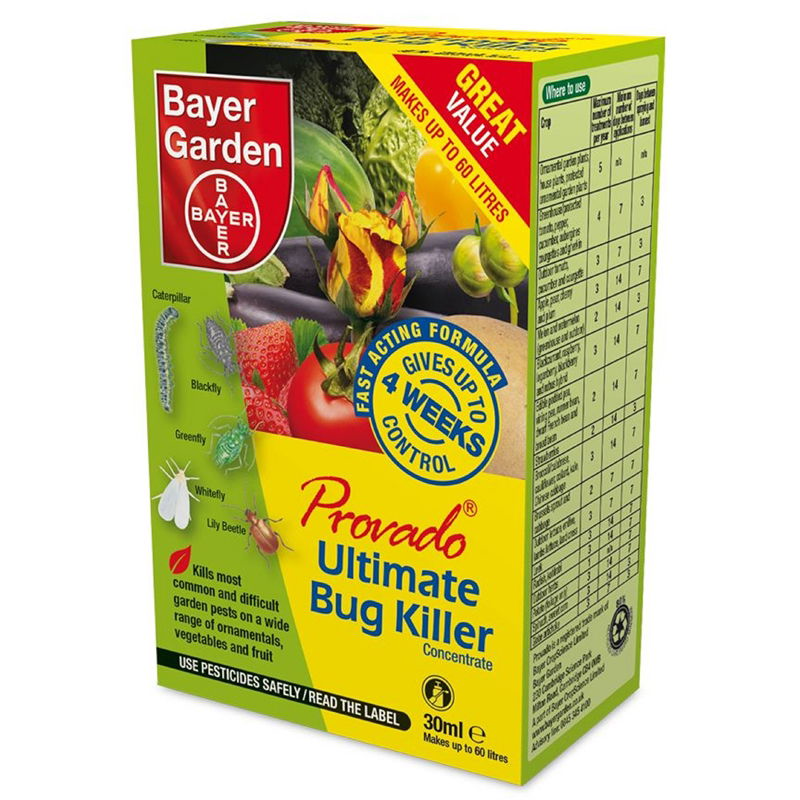A female Planococcus citri.
Contents
- Top Tips & Info
- Symptoms
- Susceptible Plants & Parts
- Actions Needed (Includes pros & cons of Chemical or Organic based pesticides)
- Ways to Prevent an Attack in the Future
Need the answer to a specific plant or pest query? Book a 1-to-1 video call with THE HOUSEPLANT DOCTOR™, the website's friendly author, to overcome and address your niggling problem! Available on iMessage, WhatsApp, Facebook Messenger & more.
Top Tips & Info
- Eradication Difficulty - Moderate
- Life Cycle - Up to two months.
- The female can lay up to twenty eggs per day - three hundred in total.
- Mealybugs will burrow as deep into the plant's cubbyholes as possible, meaning that all parts above the soil line can be affected.
- The male Mealybug will only live for three days during its adult life, mating with up to twenty females during this period. Their appearance differs greatly, with the male looking vaguely similar to a small Fungus Gnat.
- Remove and crush all of the visible bugs and cottony webs (sometimes known as 'Egg Mass') using your fingers or a damp cloth. For wooded stems, you can use an old toothbrush to help wipe these areas.
- Prune off the worst affected leaves and any flowers that house the infestation.
- Take the plant outside and perform a gentle hose-down. Aim at all of the cubbyholes for complete obliteration and replace the soil's top inch to remove any fallen live bugs.
- Allow the plant to dry off before applying either a chemical-based pesticide or a batch of natural predatory mites from Andermatt. (THE HOUSEPLANT DOCTOR™ recommends the latter as it works better than pesticides).
- Repeat the wiping, hosing-down and pesticide steps every 7 - 14 days, for the next month. Quarantine the affected plants to avoid spreading the infestation for at least a month.
What are the Symptoms of Mealybugs on Houseplants?
Mealybugs can be found on almost all houseplants. The female mealybug can lay up to three hundred eggs in its lifetime, most of which are hatched in their cottony webs. The photo below shows the typical infestation that usually situates itself in the cubbyholes of the plant. Male Mealybugs won't look anything like their female counterparts, and instead, appear to look like any other household fly. Their ability to fly up to half a mile and widely impregnate other Mealybugs empathises the fact that Mealybugs can spread very quickly onto nearby plants.
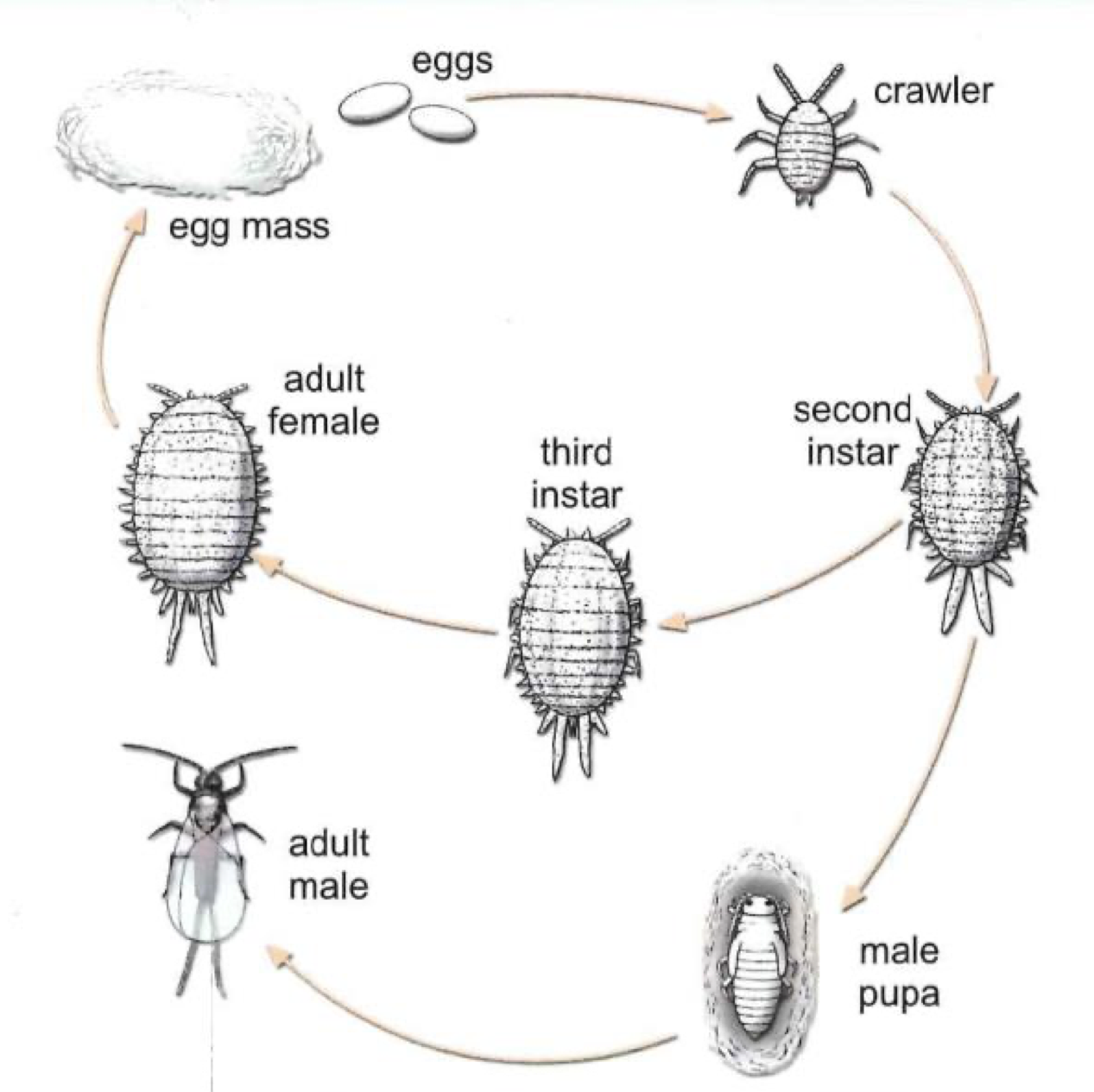 The development of a Mealybug. Copyright: PIRSA
The development of a Mealybug. Copyright: PIRSA
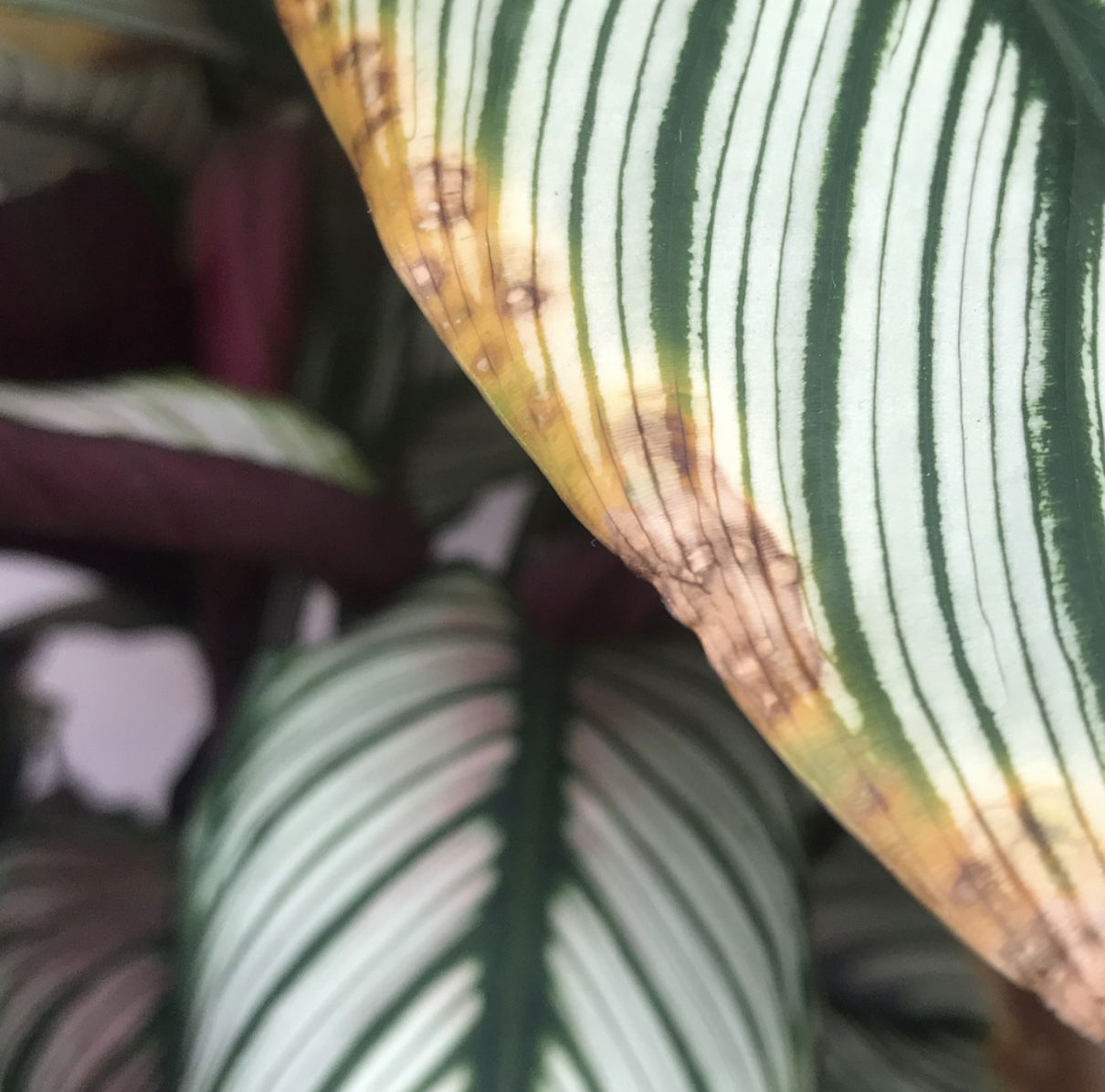 Typical mealybug damage on a Calathea ornata.
Typical mealybug damage on a Calathea ornata.
Here's an example of a Mealybug in the nooks of a Ficus triangularis (houseplant) branch.
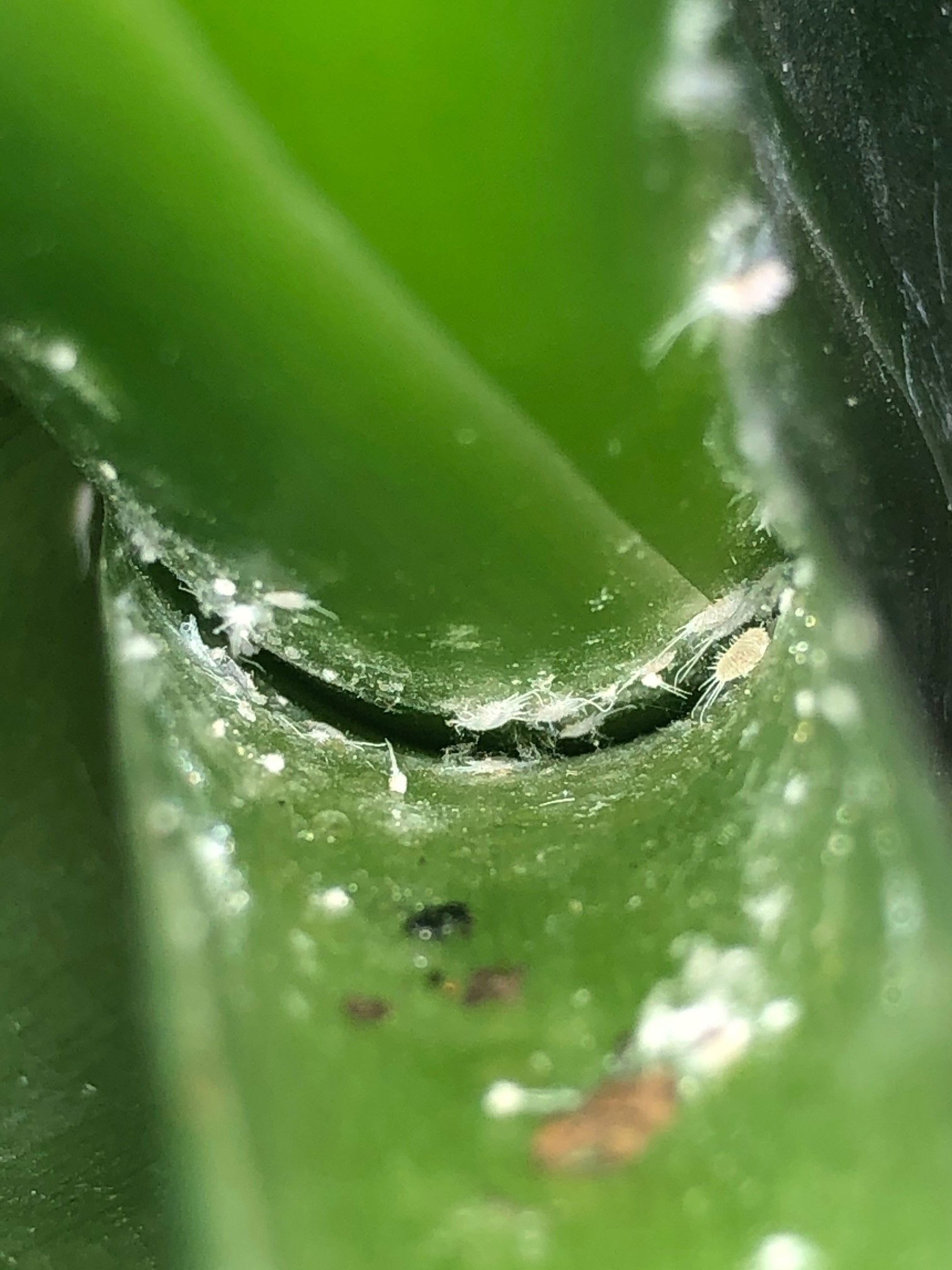 Large colonies of white webs can develop in the cubbyholes of a specimen, with the females protecting their eggs beneath them.
Large colonies of white webs can develop in the cubbyholes of a specimen, with the females protecting their eggs beneath them.
What are the most Susceptible Houseplants & Where do Mealybugs live on them?
These pests can attack all parts above the soil line; for instance, its flowers and stalks, both leaf sides and the cubbyholes of the stem.
Plants - All species are susceptible to Mealybugs, including Aroids, Citrus Trees, Cacti & Succulents.
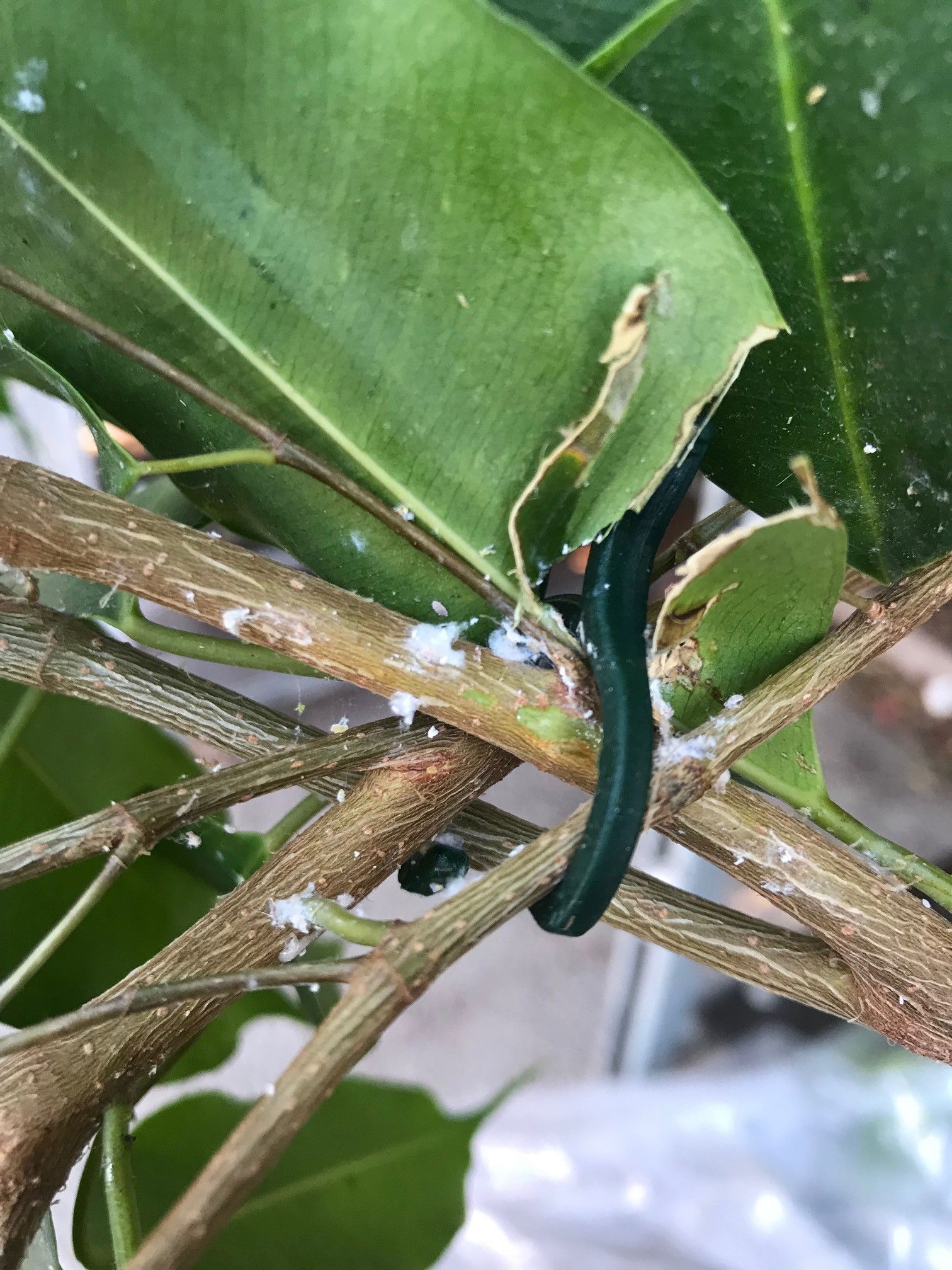 A typical attack on a Ficus benjamina.
A typical attack on a Ficus benjamina.
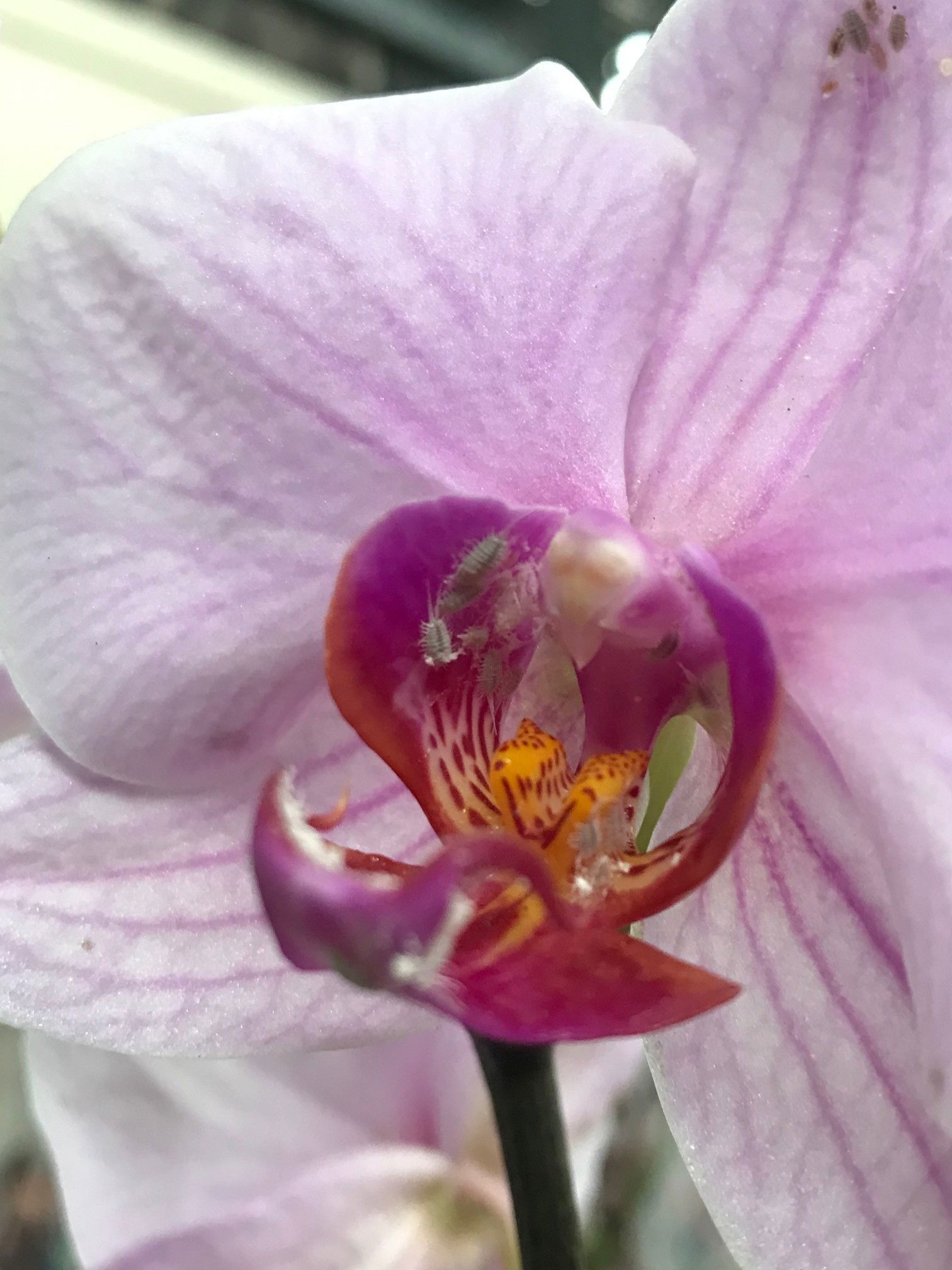 Mealybugs love to infest the flowers due to the weaker tissue that can be penetrated by their mouthparts.
Mealybugs love to infest the flowers due to the weaker tissue that can be penetrated by their mouthparts.
What Actions Are Needed to Remove Mealybugs from Houseplants?
1. Firstly, crush all of the visible bugs and their cottony webs to prevent a further infestation. Any flowers must be removed, along with their stalk as its cubbyholes can hide large quantities of critters. Instead of just squishing the webs, remove it wholly from the plant to remove any unhatched eggs. If the bug and web crushings are successful, an orange, musky-scented secretion will engulf your fingers, signalling its death.
2. Once the visible infestations are removed, take it outside and gently wash the entire plant using an outdoor hose. It's important to spray it in at least three different angles to ensure all sections of the plant has been administered. Empathise the cubbyholes, for instance, between the stem and its petioles and undersides the leaf.
3. An optional tip is to replace the top 2cm (1 inch) of the soil. Not only will this improve the overall soil appearance, it'll also remove any alive fallen bugs that have landed in it. This method can be taken once the plant has become fully dry from the first wash, and should only be performed once. For those who have an infestation in a Terrarium, decide on either removing the affected plants or treating the display as a whole.
4. Consider whether to use an organic or chemical-based pesticide. Scroll down to the following sections to learn more about which pesticide to choose. THE HOUSEPLANT DOCTOR™ would recommend using predatory mites for better results (compared to chemical pesticides).
5. Keep the affected plant away from others in a quarantined room until the symptoms have subsided for at least four weeks. Always be wary of a relapse, and keep an eye out for possible outbreaks for several months after the last sighting.
Extra Tip: Although you should perform the wiping and hosing-down process BEFORE applying one of the following pesticides, you can wash the foliage at any given time to keep the infestation under control except for when using Predatory Mites. The mites will do the work for you, so you don't need to keep washing the plant's leaves to reduce the Mealybug numbers.
Organic Pesticides
Predatory Mites - Releasing Predatory Mites on your affected houseplant's foliage is a more natural approach to controlling the infestation. It's the easiest way to remove Mealybugs, as the predatory mites (like Cryptolaemus) will do the job themselves. You'll save money because you won't need to purchase a pesticide as these mites will do a better job. Just follow the five steps above once before applying the Cryptolaemus to the leaves. They'll do the rest from just one application.
THE HOUSEPLANT DOCTOR™ has recently secured a 15% discount on all Andermatt products, including the predatory mites used for eradicating Mealybugs on the first time. Use code 'JOE15' on their website via this link.
Insecticidal or Horticultural Soap is another popular organic pesticide on the market, and there are two versions to consider. The first way is by purchasing an RTU (ready-to-use) spray bottle, which can be immediately used on the plants. Although most garden centres will stock this, it's far more economical to purchase the second option - concentrated bottles. This method comes with pro's and con's but is far cheaper to use if you have multiple infestations. It's self-explanatory and highly beneficial for the outbreak as long as you use the correct levels of dilution - the only downside is its availability in local centres. It's best to buy this option online as there are many different companies to choose from, with some being cheaper than others.
Natural Predators - The last non-organic method is by acquiring adult ladybirds or green lacewings. Although buying insects may be deemed as cruel or inappropriate, it's a natural, and least time-consuming way to remove the pests. Many online stores will sell the insects, all at varying prices and quantities. Once you've obtained the predators, release them in different sections of the plant, favouring the most infested areas first. They'll make their way around your plant, digesting both the eggs and the adults, leaving you with a potentially pest-free plant. Keep the insects and plant in an enclosed transparent box to increase the number of digestions. Unfortunately, this method can take several days to work and could even be unsuccessful, which is why other methods are favoured.
Click here to purchase natural predators like ladybirds or green lacewings.
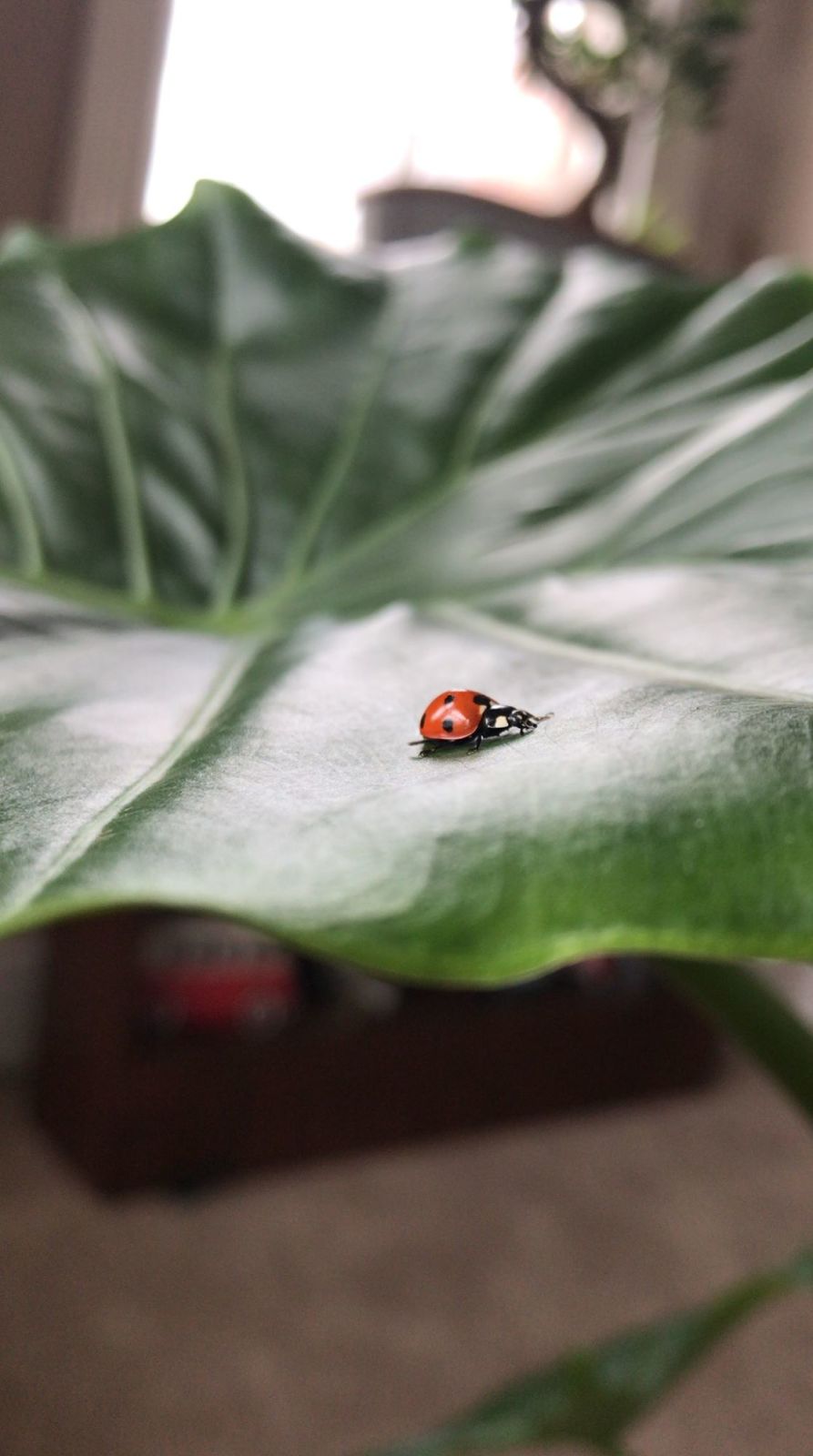 Ladybirds and Green Lacewings are an excellent choice for natural pest reduction.
Ladybirds and Green Lacewings are an excellent choice for natural pest reduction.
Chemical Pesticides
Provanto - 'Bayer Garden Provado Ultimate Fruit and Vegetable Bug Killer Concentrate' can work with removing Mealybugs, but infestations can gradually re-arise. It's a concentrated product, meaning that you'll have to dilute it with the appropriate amount of water. Spray both sides of the leaves, along with any cubbyholes that could house the infestation. Keep the plant away from other specimens once there are no signs of an outbreak for over a month. Chemical-based pesticides should only be used as a last-resort measure due to the risk of affecting other biodiversity.
Rubbing Alcohol - If you're looking for something with even more strength, try an Isopropyl Rubbing Alcohol, which can be bought from many online stores. This pesticide will work immediately, killing the bugs within a few hours of contact. Follow the manufacturer's recommendations and repeat hosing the plant down and pesticide application steps fortnightly until the infestation has elapsed. Keep it well away from others until the plant is deemed safe.
What are the Ways to Prevent a Mealybug Attack in the Future?
1. When buying a new plant from a local plant shop or garden centre, check around the common areas for infestations like its leaves, stems and flowers. Most Mealybug issues come from already-affected plants, so always keep this in mind when increasing your plant-collection.
2. Change the top layer of the soil when bringing any new plant from a shop. Replacing the top layer of the compost will remove any larvae that may have fallen in, or been deposited by a pest. THE HOUSEPLANT DOCTOR™ does this religiously whenever a new plant enters the house!
3. Perform monthly checks for pests on your own plants. Although this may sound patronising, many gardeners forget to inspect their indoor specimens and that's exactly when an infestation can arise.
Book a 1-to-1 Consultation with THE HOUSEPLANT DOCTOR™
Need realtime advice for your Mealybug infestation? Book a video or message consultation with expert Joe Bagley, THE HOUSEPLANT DOCTOR™ (author or ukhouseplants.com). Choose between a ten or thirty-minute session & a platform of your choice (WhatsApp, FaceTime, Facebook Messenger or Zoom). Ask unlimited questions in one session, including queries on your dying/challenging plants, pests eradication, terrariums, repotting advice & everything in between! Available worldwide.

